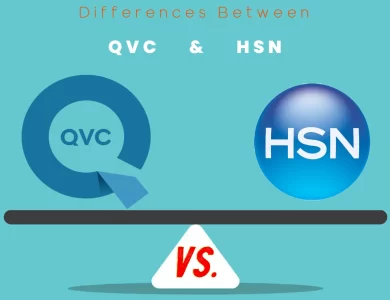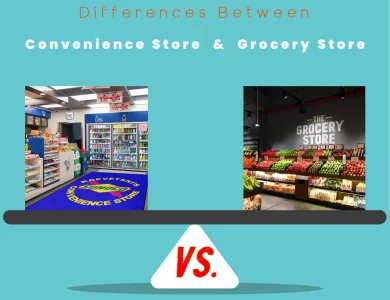Home
-

Top Loader Washing Machines vs Front Loader
Are you torn between the classic conundrum of Front Loader vs Top Loader washing machines? Deciding on the right laundry companion can feel like navigating a maze of features and benefits. Front loaders showcase a sleek horizontal design, perfect for stacking with a dryer in space-challenged areas. Their larger drum capacity and energy efficiency make them a hit among larger households, but don't overlook the regular maintenance they demand. On the flip side, top loaders sport a more traditional vertical setup, offering easy top-loading access and a more budget-friendly upfront cost. While they might lack the capacity of their front-loading counterparts, modern top loaders are bridging the gap with evolving impeller technology for efficient washing. Both options cater to different needs – from busy families to compact spaces – and understanding their distinctions is the key to choosing your laundry ally. In our comprehensive guide, we delve into the intricacies of Front Loader vs Top Loader washing machines, breaking down factors like water efficiency, washing performance, and installation considerations. Whether you're after cutting-edge efficiency or nostalgic charm, our insights will help you make an informed decision that keeps your laundry routine running smoothly.
-

HSN vs QVC
In the realm of televised and online shopping, QVC and HSN emerge as prominent players with their own unique charm. While both networks offer a curated range of products, their approaches differ significantly. QVC, with its immersive storytelling and diverse offerings, captures the art of presentation, while HSN excels in real-time interactions and personalized connections between hosts and viewers. Explore the contrasts in broadcast styles, product ranges, and technological integrations as we delve into the distinctive features that set QVC and HSN apart. Whether you're enticed by QVC's entertainment-driven approach or drawn to HSN's authentic customer engagements, understanding these differences will help you choose the shopping experience that resonates with your preferences. So, join us on a journey of discovery as we unravel the captivating tale of QVC vs HSN.
-

Vented Tumble Dryer vs Condenser Tumble Dryer
When it comes to drying your laundry efficiently, condenser and vented tumble dryers are two popular contenders in the world of household appliances. Condenser tumble dryers, known for their flexibility, do not require an external vent, granting you the freedom to place them wherever a power outlet is available. On the other hand, vented tumble dryers operate by expelling moist air through an external vent, which demands careful placement near an exterior wall or window. The main distinction lies in their moisture handling methods: condenser dryers collect moisture, condense it into water for disposal, or drainage, while vented dryers directly expel moist air. Energy efficiency seekers might lean towards condenser dryers, especially models equipped with heat pump technology that recycles warm air, reducing both energy consumption and utility bills. However, if quick drying is a priority, vented dryers might be your choice due to their faster drying cycles. It's essential to consider factors such as fabric care, maintenance, and environmental impact when making your decision. Our guide delves deeper into the specifics of these dryer types, helping you choose the one that aligns with your laundry preferences and lifestyle.
-

Induction Cooktop vs Electric
Are you torn between the classic allure of electric cooktops and the modern marvel of induction cooktops? The battle of the burners has never been more intriguing! Electric and induction cooktops stand as culinary titans, each with its own set of distinctive features. Electric cooktops rely on electrical resistance to generate heat through coils or smooth glass surfaces. They offer versatility in cookware compatibility and come in a range of designs, blending seamlessly with various kitchen aesthetics. On the other side, induction cooktops utilize magnetic fields to heat cookware directly, resulting in rapid temperature adjustments and impressive energy efficiency. The cool surface of induction cooktops enhances safety, making them a family-friendly choice. However, they require magnetic cookware for effective heating. Induction cooktops often sport sleek, modern designs that can elevate your kitchen's visual appeal. Whether you prioritize speed, energy efficiency, safety, or aesthetics, this comparative guide will unravel the nuances that distinguish these cooktop contenders, ensuring you make an informed decision that aligns with your culinary preferences and kitchen aspirations.
-

Induction Cooker vs Hotplate
Are you standing at the crossroads of culinary innovation and tradition? The choice between a hotplate and an induction cooker can transform your kitchen experience. In the epic showdown of Hotplate vs Induction Cooker, it's all about heating methods, energy efficiency, safety considerations, and cooking precision. The classic hotplate, with its open flames or electric coils, offers a nostalgic touch and versatility in cooking techniques. On the other side, the induction cooker embraces cutting-edge electromagnetic induction, providing rapid heating and precise temperature control. But the differences don't stop there. Dive into the intricacies of energy consumption, safety concerns, cookware compatibility, and the unique charm each option brings to your kitchen. Whether you lean towards the traditional art of flame-taming or the futuristic allure of magnetic technology, this exploration will guide you through the distinct features of hotplates and induction cookers. So, if you're ready to embark on a journey that will redefine your cooking experience, join us as we dissect the fascinating world of Hotplate vs Induction Cooker and help you make an informed choice for your culinary endeavors.
-

Induction Cooker vs Infrared Cooker
In the dynamic realm of modern culinary technology, the Infrared Cooker and the Induction Cooker emerge as prominent contenders, each with its unique culinary prowess. The disparity between these two culinary marvels hinges on their heating mechanisms and cooking styles. The Infrared Cooker harnesses infrared radiation to directly heat cookware, offering rapid heat transfer, ideal for high-heat tasks like grilling. Conversely, the Induction Cooker employs electromagnetic induction, delivering precise temperature control suited for a diverse array of culinary creations. Efficiency takes center stage as both cookers present commendable energy-saving attributes. The Infrared Cooker's swift heat transfer and focused approach ensure efficient cooking, though it might consume marginally more energy. On the flip side, the Induction Cooker's direct energy transfer mechanism renders it more energy-efficient in the long run. Safety considerations are addressed differently by each cooker. While the Infrared Cooker's cool cooktop minimizes accidental burns, the Induction Cooker's cooler surface reduces the risk further by primarily heating the cookware. Maintenance-wise, both cookers offer ease of cleaning due to their smooth surfaces.
-

Air Conditioner vs Air Cooler
When it comes to beating the heat, the choice between an air cooler and an air conditioner becomes pivotal. Understanding their distinct cooling mechanisms and energy consumption patterns is crucial in making an informed decision. Air coolers utilize evaporation to provide a natural cooling experience, making them energy-efficient and environmentally friendly. On the other hand, air conditioners employ refrigeration cycles for more potent and rapid cooling, making them effective in various climates. Deciphering the pros and cons of each, including factors like installation, maintenance, and humidity impact, ensures that your cooling solution aligns perfectly with your preferences. Whether you seek the soothing breeze of an air cooler or the arctic precision of an air conditioner, our guide will help you make the right choice for a comfortably cool space this summer.
-

Window AC Versus Split AC
Are you caught in the dilemma of choosing between Split AC and Window AC? With summer's heat making its presence felt, the decision becomes crucial for a comfortable living space. Let's unravel the distinctions between these two cooling stalwarts. Split AC flaunts a modern appeal, comprising indoor and outdoor units connected through pipes, offering flexibility in unit placement and even cooling distribution. On the other side, Window AC presents a simpler alternative, perfect for snug spaces, with a single unit directly installed in windows or walls. Visual aesthetics, noise levels, maintenance demands, energy efficiency – each aspect plays a vital role in shaping your decision. While Split AC often boasts sleek design and lower noise due to the outdoor compressor, Window ACs might be noisier with all components indoors. Energy efficiency also leans towards Split ACs, especially those equipped with inverter technology. Maintenance varies, with Split ACs needing attention for both units and Window ACs simplifying tasks due to their single-casing design. Let's delve into the world of cooling comforts, exploring features, pros, and cons, to help you confidently choose the ideal AC type that perfectly suits your space, preferences, and budget.
-

Grocery Store vs Convenience Store
When it comes to shopping, convenience stores and grocery stores offer distinct experiences tailored to various needs. Convenience stores, with their compact layouts and swift service, excel in providing quick snacks, beverages, and essential items, often available 24/7. On the other side of the spectrum, grocery stores boast spacious environments where shoppers can explore an extensive range of products, from fresh produce and pantry staples to meats and specialty items. The layout of convenience stores encourages efficiency, catering to those seeking rapid solutions and immediate indulgence. In contrast, grocery stores present a more comprehensive shopping journey, inviting individuals to leisurely navigate their aisles, discover new ingredients, and plan meals. Both options have their merits – convenience stores offer convenience for on-the-go moments, while grocery stores cater to those looking for diverse culinary choices and larger shopping hauls. Whether you're seeking a quick snack fix or embarking on a culinary adventure, understanding the differences between these two shopping havens can help you make informed choices that align with your preferences and lifestyle.
-

Supermarket vs Departmental Store
Embarking on a shopping journey often prompts the choice between two retail giants: departmental stores and supermarkets. These distinct shopping havens cater to different needs and preferences, creating unique shopping experiences for every individual. Departmental stores entice with their multi-floor layout and a diverse array of products spanning clothing, accessories, cosmetics, and electronics. The ambiance is elegant, and personalized assistance adds a touch of luxury to the exploration. Meanwhile, supermarkets prioritize practicality, offering well-organized aisles stocked with groceries and household essentials, providing convenience and competitive prices. Both options have their own charm, making the decision a matter of whether you're after an indulgent adventure or a swift and efficient shopping trip.









